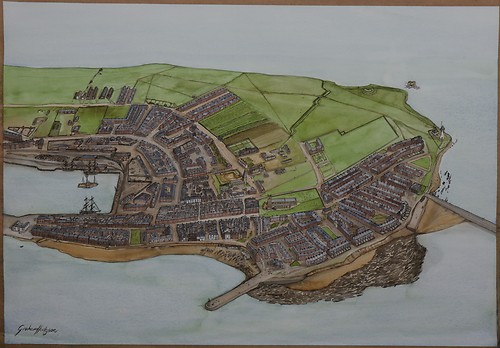 Hartlepool Sports & Leisure
Hartlepool Sports & Leisure
- Cinemas, Theatres & Dance Halls
- Musicians & Bands
- At the Seaside
- Parks & Gardens
- Caravans & Camping
- Sport
 Hartlepool Transport
Hartlepool Transport
- Airfields & Aircraft
- Railways
- Buses & Commercial Vehicles
- Cars & Motorbikes
- The Ferry
- Horse drawn vehicles
 A Potted History Of Hartlepool
A Potted History Of Hartlepool
- Unidentified images
- Sources of information
- Archaeology & Ancient History
- Local Government
- Printed Notices & Papers
- Aerial Photographs
- Events, Visitors & VIPs
 Hartlepool Trade & Industry
Hartlepool Trade & Industry
- Trade Fairs
- Local businesses
- Iron & Steel
- Shops & Shopping
- Fishing industry
- Farming & Rural Landscape
- Pubs, Clubs & Hotels
 Hartlepool Health & Education
Hartlepool Health & Education
- Schools & Colleges
- Hospitals & Workhouses
- Public Health & Utilities
- Ambulance Service
- Police Services
- Fire Services
 Hartlepool People
Hartlepool People
 Hartlepool Places
Hartlepool Places
 Hartlepool at War
Hartlepool at War
 Hartlepool Ships & Shipping
Hartlepool Ships & Shipping

Victorian Times
What we know about this image :
Victorian Times
In 2004, Tees Archaeology, Hartlepool Borough Council and The Headland History Group supported by the Heritage Lottery Fund produced a set of four posters which reconstructed the town of Hartlepool over 1300 years.
Graham Hodgson, an archaeological illustrator painted four watercolours of the town for this project. The images are of the original artwork and the notes give the information which was on the posters.
This was how Victorian Hartlepool looked in 1857 after 25 years of industrialisation. The building of the new railway and dock for the export of coal massively expanded the town’s population from about 1300 people in 1831 to just over 9000 in by 1851. Building this new dock and harbour destroyed much of the medieval town wall which was preserved only where it formed a strong sea defence.
While the middle classes bought ‘town hoses’ in streets constructed on what were one open fields, the poor lived in overcrowded slum conditions lacking basic sanitation. The situation was greatly improved in the 1850s due to the efforts of a new Town Corporation concerned to avoid further cholera epidemics like those of 1832 and 1847. The slums of the 1830s were demolished, new water supplies and sewers were constructed and gas lamps introduced to light the streets. The hated workhouse situated in the old Elizabethan manor house built on the site of the Friary, would become te town’s first hospital in 1867.
New places of worship in the 1850s included St Mary’s Catholic Church and several non conformist chapels. There were also 20 schools, most run by private tutors for a handful of pupils from well off families, although the larger like the Prissick charity schools taught 250 children a basic education for no fee. What limited leisure time people had was occupied by the traditional family walk on a Sunday afternoon, the occasional show by a troupe of travelling players, or a visit to one of the numerous public houses.
Notes also on poster:
Elephant Rock: a natural rockformation resembling an elephant carved by the action of the waves. Sadly it collapsed into the sea in May1891.
The original lighthouse: was built in 1846 at a cost of £5750. It was lit by natural coal gas.
Date (of image) : 2004
Donor : Hartlepool Museum Service
Creator : Tees Archaeology/ Hartlepool Council
Location
Related items :
 Headland History Posters 2004
Headland History Posters 2004
In 2004, Tees Archaeology, Hartlepool Borough Council and The Headland History Group supported by the Heritage Lottery Fund produced a set of four posters which reconstructed the town of Hartlepool over 1300 years.
Graham Hodgson, an archaeological illustrator painted four watercolours of the town for this project. The images are of the original artwork and the notes give the information which was on the posters.
More detail »




